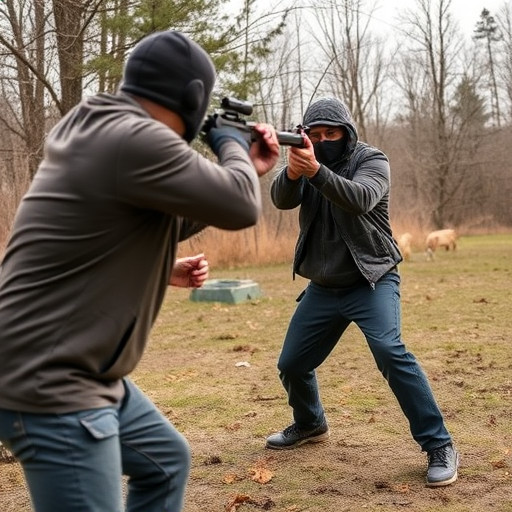The legality and regulation of stun devices, or electronic control devices (ECDs), are determined by their neuromuscular effects, which cause immediate muscle relaxation and temporary incapacitation. US state laws vary widely regarding stun device ownership, power output, age restrictions, and carry locations, making it crucial for prospective owners to understand these regulations to ensure legal compliance and responsible use. The neuromuscular impacts of ECDs further complicate this landscape, underscoring the need for comprehensive knowledge to mitigate potential risks associated with misuse or harm.
“Unraveling the legal complexities surrounding stun guns is a crucial step in understanding their role as personal defense tools. This comprehensive guide delves into the state-by-state regulations that dictate the ownership and use of stun devices, focusing on the critical factor: neuromuscular effects.
We’ll dissect the varying legal landscapes, offering insights through a detailed analysis and case studies. Whether you’re an advocate for personal safety or a law enthusiast, this article promises to illuminate the intricate web of restrictions governing stun guns across different states.”
- Understanding Stun Guns: Neuromuscular Effects and Their Impact on Legal Restrictions
- State-by-State Analysis: Exploring the Legal Landscape of Stun Devices
- Navigating the Use and Ownership of Stun Guns: Key Considerations and Case Studies
Understanding Stun Guns: Neuromuscular Effects and Their Impact on Legal Restrictions

Stun guns, officially known as electronic control devices (ECDs), operate by delivering a strong electric current that disrupts neuromuscular transmission in their target. This interference causes immediate muscle relaxation, leading to temporary incapacitation. The impact of this neuromuscular effect is what drives legal restrictions surrounding stun gun possession and use.
These devices’ non-lethal nature makes them a popular choice for personal protection. However, their effectiveness and safety are subject to regulatory scrutiny. Laws often consider factors like the device’s power output, the specific neuromuscular effects it produces, and its impact on bystanders or animals. Understanding the precise neuromuscular effects of stun devices is crucial in shaping legislation that balances personal safety with public welfare.
State-by-State Analysis: Exploring the Legal Landscape of Stun Devices

In the United States, the legal status of stun devices, also known as electroshock weapons or tasers, varies greatly from state to state. This patchwork legislation reflects differing perspectives on public safety and personal defense. Understanding these variations is crucial for anyone considering carrying a stun device for self-protection. A comprehensive review of state laws is essential to grasp the legal landscape surrounding these devices, especially their neuromuscular effects.
Some states, like Texas and Oklahoma, permit open carry of stun guns with minimal restrictions, while others, such as New York and California, have stringent regulations or outright bans. These disparities are further complicated by specific rules regarding stun device power output, age restrictions for purchase, and places where they can be carried or used. Navigating these legal labyrinths requires careful consideration of both federal laws and state-specific statutes to ensure compliance and peace of mind.
Navigating the Use and Ownership of Stun Guns: Key Considerations and Case Studies

Navigating the legal landscape surrounding stun guns involves understanding complex restrictions that vary from state to state. While some areas permit their ownership and use for self-defense, others have stringent regulations or outright bans. This dichotomy underscores the need for individuals considering stun gun acquisition to familiarize themselves with local laws. Penalties for unauthorized possession can be severe, ranging from fines to imprisonment.
Case studies reveal differing approaches across states. For instance, some states like Texas allow open carry of stun guns without a permit, while others like New York require permits and specific use cases. The neuromuscular effects of stun devices, which temporarily incapacitate targets through electrical impingement on nerve impulses, further complicate matters. This technology raises concerns about misuse and potential harm, leading to stringent regulations in some jurisdictions. Understanding these nuances is crucial for responsible stun gun ownership and usage.
The legal restrictions surrounding stun guns vary widely across states, reflecting a complex interplay between public safety concerns and individual rights. Understanding the neuromuscular effects of these devices is crucial for navigating this landscape. As demonstrated in our state-by-state analysis and case studies, responsible ownership and use can be fostered through informed decision-making and adherence to local laws. By recognizing the unique legal considerations and adopting best practices, folks can ensure stun guns serve as effective tools for personal safety while minimizing potential risks.
